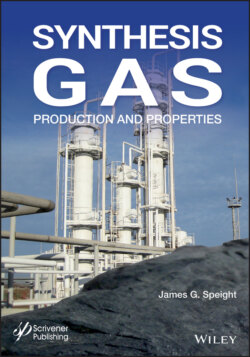Читать книгу Synthesis Gas - James Speight G., James G. Speight - Страница 10
Оглавление
Preface
The projections for the continued use of fossil fuels indicate that there will be at least another five decades of fossil fuel use (especially coal and petroleum) before biomass and other forms of alternate energy take hold. Furthermore, estimations that the era of fossil fuels (petroleum, coal, and natural gas) will be almost over when the cumulative production of the fossil resources reaches 85% of their initial total reserves may or may not have some merit. In fact, the relative scarcity (compared to a few decades ago) of petroleum was real but it seems that the remaining reserves make it likely that there will be an adequate supply of energy for several decades. The environmental issues are very real and require serious and continuous attention.
In preparation for the depletion of fossil fuel resources, gasification can be proposed as a viable and reliable alternative solution for energy recovery from a variety of feedstocks. Gasification processes can accept a variety of feedstocks but the reactor must be selected on the basis of the feedstock properties and behavior in the process, especially when coal, biomass, and various wastes are considered as gasification feedstocks. The focus will be on the production of synthesis gas as an intermediate in the production of the necessary fuels and chemicals.
On the other hand, the gasification process still faces some technical and economic problems, mainly related to the highly heterogeneous nature of unconventional feedstocks such as biomass and municipal solid wastes and the relatively limited number of gasification plants worldwide based on this technology that have continuous operating experience under commercial conditions.
Synthesis gas (syngas) is a fuel gas mixture consisting predominantly of carbon monoxide and hydrogen and is typically a product of a gasification. The gasification process is applicable to many carbonaceous feedstocks including natural gas, petroleum resids, coal, biomass, by reaction of the feedstock with steam (steam reforming), carbon dioxide (dry reforming) or oxygen (partial oxidation). Synthesis gas is a crucial intermediate resource for production of hydrogen, ammonia, methanol, and synthetic hydrocarbon fuels.
It is the purpose of this book to present an overview of the issues related to the production and use of synthesis gas and to present to the reader the means by which the continually evolving synthesis gas technology will play a role in future production of fuels and chemicals.
Dr. James G. Speight Laramie, Wyoming, USA
